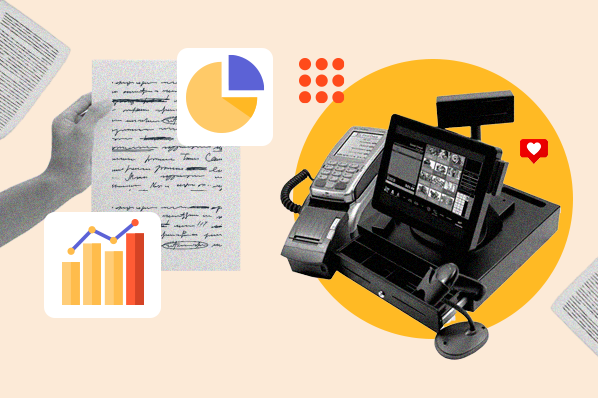In this article, I’ll give you the tools to make that decision. Let's get started.
Table of Contents
- What Is Customer Acquisition vs. Retention?
- Why Companies Focus on Customer Acquisition
- Why Companies Focus on Customer Retention
- The Outcomes of Focusing on Customer Acquisition
- The Outcomes of Focusing on Customer Retention
- Which Should My Business Focus On?
- Finding the Right Balance Between Customer Acquisition and Retention
What Is Customer Acquisition vs. Retention?
Customer acquisition is the process of bringing new customers into your business. It relies on outreach from marketing and sales teams to identify prospects and convert them into paying customers.
As I mentioned, I have a few businesses. One of which is my band, Juice. An example of customer acquisition is when someone who has never seen us hears our music and becomes a fan.
Customer retention is everything you do to keep existing customers coming back. Customer success and support teams play a significant role in customer retention as they continually nurture relationships and ensure the customer’s ongoing success with your brand.
I’m grateful that my band has a dedicated fanbase, and we do everything we can to nurture our relationships with those fans (customers) who keep coming back. We send personalized outreach, greet fans at shows, and offer exclusive merchandise to our biggest supporters. These are all customer retention efforts that ensure loyalty and recurring revenue from our customers.

Customer acquisition and retention are both important, but which to prioritize depends on your business's circumstances, which change over time.
“You can't really choose one over the other,” says Alan Stoffer, a partner at Worqflow. “You need both. You have to bring customers in, and once you get them, you must engage in activities that will keep them engaged and help them realize value.”
Similarities
- Customer acquisition and retention share the same goal: increasing your business’ revenue
- Intimate understanding of customer needs and pain points
- Require significant investment of resources (time, money, effort) to be effective
Differences
- Cost. Acquiring a new customer can cost five times more than retaining an existing one.
- Time horizon. Customer acquisition results in immediate revenue boosts, while retention builds long-term value.
- Requires different teams. Sales and marketing teams are mainly responsible for customer acquisition, focusing on outreach and conversion strategies. In contrast, support and success teams nurture existing customer relationships through engagement and problem-solving.
Why Companies Focus on Customer Acquisition
I’ve seen many businesses, including mine, focus on customer acquisition. It’s only natural to want to gain more customers. After all, there is no business without customers.
Here are some reasons I’ve found that companies lean heavily into customer acquisition.
- Growth objectives. Startups and businesses looking to scale rapidly must acquire many new customers.
- Market expansion. Entering an untapped market segment necessitates the acquisition of new customers.
- Investor expectations. Stakeholders often prioritize user growth and market penetration.
- Competitive pressure. Gaining new customers is crucial in a competitive landscape.
- Digital opportunities. Online advertising and social media make it possible to reach larger audiences than ever before at a reduced cost.
For example, I’ve been focused on customer acquisition with my band, Juice, because of growth objectives and competitive pressures. We are still a relatively small band, and we’d like to scale our business to achieve sustainability. That requires growing our fanbase — our version of customer acquisition. Our primary strategy for achieving this is touring, which helps us reach new audiences nationwide.
Digital opportunities, mainly social media, also play a large role in our customer acquisition strategy, as they allow us to connect with fans who may not be able to see us live.
Customer acquisition is critical, especially when the objective is rapid business growth. However, while new fans are essential, I’ve learned that keeping fans engaged and turning them into loyal superfans is just as, if not more, essential for long-term growth.
Why Companies Focus on Customer Retention
Gaining new customers is great, but retaining existing ones has its own set of advantages. Here are some reasons I’ve found why companies choose to focus on customer retention:
Reasons for a company to focus on retention over acquisition include:
- Reduced cost. Retaining existing customers is far cheaper than acquiring new ones.
- Increased lifetime value. Loyal, retained customers buy more often and spend more than newer customers. They are also more open to upselling and cross-selling opportunities.
- Predictable revenue. Retained customers provide a steady income stream, making financial forecasting more manageable and accurate.
- Better feedback. Loyal and highly engaged customers offer valuable insights to drive innovation and improvements to your products or services.
- Brand advocacy. Loyal customers will likely recommend you to family and friends, which is a double win for customer retention and acquisition.
- Increased ROI. A 5% increase in customer retention can boost ROI by 25-95%.
- Economic stagnation. When the economy is in trouble, new customers are hard to come by. Customer retention can be a risk mitigation measure in such circumstances.
- Repeat sales. Brands have a 60-70% chance of making a sale to an existing customer, but that number drops to 20% for new customers.
In my experience with the band, nurturing strong relationships with our existing fans has worked wonders for long-term growth. I’ve been in the band for ten years, and I see many fans every year when we come to their city (or any city within an 8-hour drive, sometimes). Our loyal fans spend top dollar at the merch booth and help us play bigger venues every year with their relentless advocacy.

Overall, retaining customers is cheaper and provides better long-term gain than acquisition. That being said, there’s a time and place for both strategies.
Now that we know why a company might choose a side of the customer acquisition vs. retention debate, I’ll tell you what happens to your eggs depending on what basket you put them in.
The Outcomes of Focusing on Customer Acquisition
Focusing on customer acquisition has both benefits and drawbacks.
Positive Outcomes
- Increased customer base: The main benefit of customer acquisition is more new customers, which drives metrics like revenue and active users.
- Increased market share: Gaining more customers means getting a bigger piece of the pie. In highly competitive industries, customer acquisition can help you dominate the market.
- Economies of scale: A large customer base can help you reduce costs per unit since you are increasing production volume. Of course, this only applies if you make physical products.
Negative Outcomes
- Higher costs: Attracting new customers is expensive. You’ll need to invest significant resources into marketing and sales to achieve sustained growth in your customer base.
- Potential for higher churn: If you focus all your efforts on acquiring new customers, it's unfortunately quite easy to neglect those customers once they convert. New customers might not stick around long if you can’t keep them adequately engaged with your hands tied, attracting new leads.
- Resource strain: Focusing too much on acquisition diverts resources from other departments like Service and Support.
The Outcomes of Focusing on Customer Retention
Prioritizing customer retention also has its pros and cons. While acquisition has been a standard business strategy for as long as I can remember, customer retention only recently stepped into the spotlight in the past decade due to the subscription economy. Here’s what you can expect if you prioritize customer retention.

Positive Outcomes
- Higher Customer Lifetime Value (CLV): CLV is the total revenue you can expect from a single customer throughout their lifetime with your business. Focusing on retention means longer lifetimes for your customers and higher CLV. In addition, retained customers spend more than newer ones, which further boosts CLV.
- Lower acquisition costs: Acquiring new customers is expensive, and you’ll be saving money since you’re doing less of that. In addition, loyal customers can refer others, reducing the need for costly marketing campaigns and sales outreach.
- Stronger customer relationships: Focusing on keeping your customers around means building trust and loyalty. Doing so makes them more satisfied, less likely to churn, and more likely to spend.
- Increased upselling and cross-selling: Retained customers are more amenable to upselling and cross-selling since they already know and trust your brand.
Negative Outcomes
- Slower customer growth: Focusing on retaining existing customers means fewer new customers are entering the pipeline, which could be a dealbreaker if you are looking for rapid growth.
- Slowed market expansion: Relying on existing customers can limit market expansion opportunities.
- Missed opportunities: You might miss out on emerging market segments if you are solely focused on existing customers.
Which Should My Business Focus On?
I wish there were a one-size-fits-all answer to the customer acquisition vs retention debate, but unfortunately, there isn’t. Like most things in life, it's nuanced.
The decision to focus on retention over acquisition (or vice versa) depends highly on your unique business situation. There will be times when you need to focus on gaining new customers, and there will be other times when keeping those customers around is the main priority. It’s all part of the journey.
That being said, I think customer retention is exceptional because when you knock that out of the park, it also drives customer acquisition. Here are my thoughts on when to focus on customer acquisition vs retention:
When to Focus on Acquisition
- You’re just starting out. When you’re new to the market, you must focus on building a customer base.
- You’re launching a new product. New products are a great reason to target new customers with new needs you can fulfill. For example, when my band releases new music, we focus on reaching new potential fans.
- You’re in a competitive market. If your competitors are aggressively acquiring new customers, you may need to follow suit to keep up.
When to Focus on Retention
- Your acquisition costs are high. Retaining customers makes sense if acquiring new ones costs you an arm and a leg.
- Your customer base is stable. If you have a solid group of customers who are the cornerstone of your business, it makes sense to deepen those relationships and increase Customer Lifetime Value.
- Economic downturn. If the economy isn’t doing so hot, and people aren’t spending, focusing your efforts on keeping existing customers happy is a logical bet.
Mario DeAlmeida, vice president of marketing at Building Security Services, summed it up better than I could:
“The decision to prioritize customer acquisition or retention depends on your business goals. If you're in a competitive market and need to rapidly grow your customer base, prioritize acquisition. On the other hand, if you have a solid customer base and want to maximize ROI, retention strategies are key.”
It’s all about finding the right balance: “In terms of ROI, customer retention often outperforms acquisition. Existing customers are more likely to make repeat purchases and spend more over time,” DeAlmeida explains. “However, it's essential to strike a balance between acquisition and retention to ensure sustainable growth.”
Finding the Right Balance Between Customer Acquisition and Retention
Customer retention and acquisition are both vital for sustainable business growth. Personally, I aim for a balance between the two strategies, staying agile so I can pivot when necessary.
Which side of the customer acquisition vs. retention debate you focus on may change based on your business goals, market conditions, and available resources.
However, one thing remains true in 2024: The customer is king. If you focus energy on solving customer needs and consistently delivering value, you’ll attract new customers and keep them coming back for more.
Editor's note: This article was originally published in August 2022 and has since been updated for comprehensiveness.
Customer Acquisition


.webp)

![7 Customer Acquisition Challenges You Might Face This Year [New Data]](https://53.fs1.hubspotusercontent-na1.net/hubfs/53/customer%20acquisition%20%20(1).webp)







